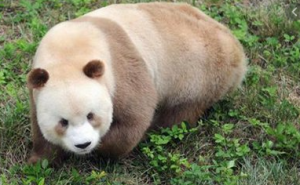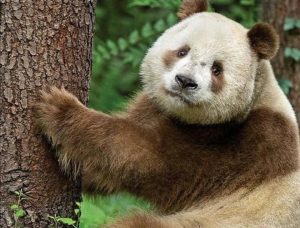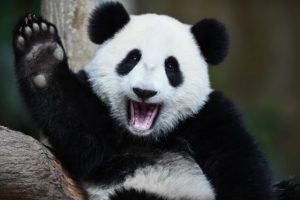Podcast: Play in new window | Download (Duration: 15:20 — 17.3MB)
Thanks to Pranav and Zachary for their suggestions this week, where we learn the story behind two cuddly toys and the animals that inspired them!
The cartoon that inspired the toy:
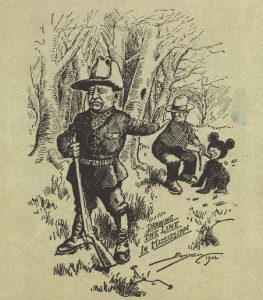
My own teddy bear:
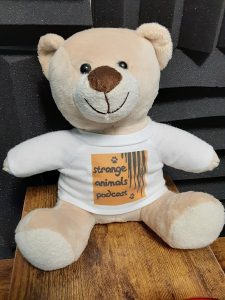
An American black bear (not William Taft although yes, there is a resemblance, including a willingness to eat entire possums in one sitting):
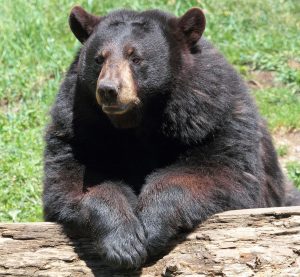
William Taft:
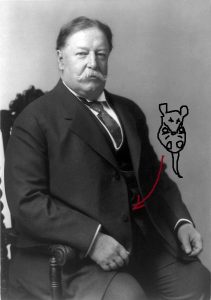
A Virginia opossum:
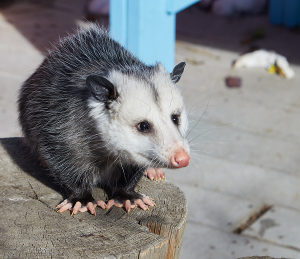
A possum with babies!
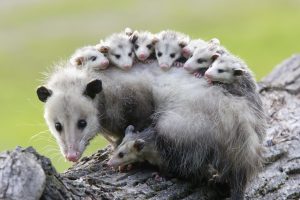
Stop trying to make Billy Possum a thing:
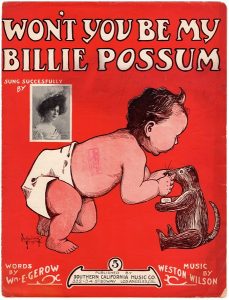
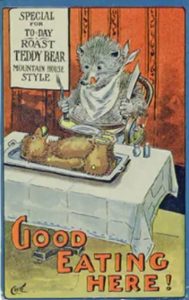
Admittedly it was pretty cute:
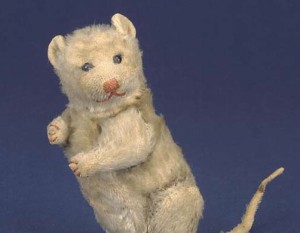
Show transcript:
Welcome to Strange Animals Podcast. I’m your host, Kate Shaw.
This week we’re going to learn about two cuddly animals, one of which you’ve definitely heard of, the other you might not have. Oh wait, you’ve heard of both animals for sure—but you might not have heard about the toys based on the animals. Thanks to Pranav and Zachary for their suggestions.
The president of the United States at the beginning of the 20th century was Theodore Roosevelt, who served from 1901 to 1909. He was sometimes called Teddy instead of Theodore, although he didn’t actually like the nickname. Roosevelt is widely considered to have been a very good president, as well as an interesting and sometimes eccentric man, but his main contribution to history as far as most people are concerned is the teddy bear.
Roosevelt was an active man who spent a lot of time horseback riding, playing tennis, hiking, swimming, boxing, and lots of other things. He also liked to read, spoke several languages, and wrote poetry—and he was an avid hunter and would travel the world to kill things. That’s what he was doing in November 1902, when the governor of Mississippi invited him on a bear hunting trip.
The hunting party killed several bears that day, but Roosevelt hadn’t shot anything. Some of the president’s attendants decided to help things along, and they chased a bear down with hounds until it was exhausted, beat it until it was almost dead, and tied it to a tree. I know, this is awful. I’m sorry. Then they said, “Hey, Mr. President, we found you a bear to shoot.”
Not only did Roosevelt refuse to kill the bear, he was angry at the people who had treated it so badly. He requested that the poor animal be shot to put it out of its misery, since by that point it was already dying from its treatment.
Because Roosevelt was the president, everything he did made its way into the newspapers, including this event. A political cartoonist used the bear hunt in a cartoon, only instead of an adult bear he made the bear a cute little cub. This inspired an inventor named Morris Michtom and his wife Rose to make a little bear cub doll to sell at their candy shop in Brooklyn, New York. They labeled it “Teddy’s bear” and the rest is history.
Most teddy bears don’t look much like an actual American black bear. The black bear lives in forested areas throughout much of North America and used to be even more widespread, but was hunted to extinction in many areas. It’s more closely related to the Asian black bear than it is to other bears found in North America, including the grizzly and polar bears. Its fur is usually black although some black bears are gray, various shades of brown, or sometimes even a rare cream color. The biggest American black bear ever measured was just barely under 8 feet long, or 2.41 meters, and probably weighed 1,100 pounds, or 500 kg. Most black bears are a lot smaller than that, though.
Black bears mate in summer but the fertilized egg cells don’t start developing until November. This gives the female plenty of time to gain lots of healthy weight before she finds a safe place to spend the winter. Black bears hibernate in cold weather, although scientists are still debating whether its metabolic changes constitute true hibernation. A bear will use a hollow tree or small cave as a den, or will dig a den. It gets comfortable in its den and soon its heart rate starts to drop until it only beats about 8 times a minute. Its body temperature stays about the same as usual and unlike many other animals that hibernate, it’s not sound asleep the whole time. It spends a lot of time awake and may even get up and move around, maybe even go out on nice days and look for food. Mostly, though, a hibernating bear doesn’t eat or drink, and it doesn’t need to defecate or urinate. Once the weather starts warming up, it emerges from its den and spends a few weeks just roaming around, eating whatever it can find while its body returns to non-hibernation status.
Babies are born during the winter, and they’re extremely small and underdeveloped at birth, only about 8 inches long on average, or 20 cm. A mother bear usually has two or three cubs, sometimes just one and occasionally four. The mother bear nurses her babies and keeps them warm through the rest of the winter, and once the weather warms up they’re big enough to come outside with her for the first time.
The American black bear is an omnivore, but it eats a lot more plant materials than it does meat. It especially likes berries and other fruit. It also eats a lot of insects, including ants, bees, and an especially nasty type of wasp called a yellow jacket. The bear has thick fur to help protect it from stings, but it also eats up the insects really fast. You can’t sting a bear if a bear just crunched you up with its big teeth. The black bear will catch fish whenever it can, will eat fawns and other baby animals when it can find them, will eat small animals like rodents when it gets the chance, will eat eggs when it comes across a nest, and will eat carrion, especially when it first emerges from hibernation.
Although black bears are dangerous, they’re also shy and avoid people when they can. The exception is when they get used to people food, either because they were given food by people, or because they found food that people left. That’s why it’s so incredibly important to never feed wild animals, especially dangerous ones like bears, and why you should learn how to properly hang your backpack from a tree when you’re camping so a bear can’t get it. If a bear learns to associate humans with food, it will become aggressive. When that happens, forest rangers have to make the hard decision to kill the bear before it hurts or kills a person.
While other species of bear growl, the American black bear doesn’t. The closest it comes to a growl is a deep call it makes in its throat, and it also makes huffing sounds, moans and grunts, squeals, clicks and pops that it makes with its mouth, including tongue clicking, and when it’s comfortable a bear may make a rumbling sound something like a hum or a purr.
This is what a black bear sounds like:
[bear sounds]
So, back to teddy bears. Plush toy bears were incredibly popular while Teddy Roosevelt was in office, but toy manufacturers were pretty sure the fad would drop in popularity once Roosevelt was no longer president. William H. Taft became president after Roosevelt, and in January 1909 he attended a banquet in Atlanta, Georgia where the main course served was possum and sweet potatoes.
These days most people don’t eat the Virginia opossum, more commonly called the possum in the United States, but it used to be considered a delicacy. Taft wolfed down an entire roast possum by himself, so fast that a doctor sitting at the table with him said he needed to slow down. Taft liked his food and he especially liked possum, and when his supporters presented him with a plush toy possum after the meal, he found it amusing.
But the people who’d given him the toy possum weren’t playing around. Ha ha, get it? Playing? Toy? They were certain their possum was going to be the next big thing. They formed a company called the Georgia Billy Possum Company and advertised the toys with the slogan, “Good-bye, Teddy Bear. Hello, Billy Possum.” They also released postcards, pins, songs and sheet music, and all sorts of other stuff branded with Billy Possum in hopes of hyping up their toy and becoming millionaires.
The problem, of course, is that while everyone cared about the poor bear that Roosevelt refused to kill, no one cared that Taft could eat a whole roast possum in one sitting. Besides, Taft was boring. Billy Possum never took off and people kept their teddy bears.
In many articles about Billy Possum, the whole idea of a possum being cute enough to make a cuddly toy from is laughed at. But possums are adorable! The Virginia opossum is a nocturnal marsupial that lives throughout much of the eastern United States, especially the southeast, and just about all of Mexico. It’s gray and white with a bare pink nose and bare pink toes, and it also has a long prehensile tail that’s mostly bare of fur that it uses to help it climb around in trees. Most possums are about the size of a cat but with much shorter legs. It’s the only marsupial that lives in North America.
The possum is omnivorous and eats fruit, carrion, eggs, nuts, vegetables, insects, and other small animals like mice and frogs. It’s resistant to the venom of snakes, bees, and scorpions, and will happily eat all three of these types of animals. It’s even less picky than the bear about what it eats and will genuinely eat pretty much anything, from birdseed and cat food it finds in people’s yards, to crayfish and baby rabbits, to ticks and persimmons, to slugs and snails.
The possum doesn’t live very long, and pretty much anything that can catch it will eat it, but it reproduces efficiently. Like other marsupials, the female has two vaginas and wombs and the male has a double penis. The female can have more than 20 babies at a time, although 8 or 9 is more common, and like other marsupials they’re born extremely early. The newborn babies are the size of a bean or a honeybee, but they’re strong enough to crawl into their mother’s pouch to find a teat. Since the possum has 13 teats, and each baby needs a teat to stay latched onto while it finishes developing, even if the mother has more than 13 babies, only 13 babies will survive.
The babies stay in their mother’s pouch for 2 1/2 months, at which point they start riding on her back instead. She carries them around for the next couple of months, teaching them how to be possums.
The possum has one real defense against predators, which it only resorts to when running away or hissing with its fur puffed up doesn’t help. It will flop onto its side with its tongue hanging out but its eyes open, and its heart rate drops and its breathing becomes shallow and slow. It also expels a stinky fluid from its anal glands. In short, it looks, acts, and smells like it’s already dead. It’s called “playing possum,” and it actually works pretty well…until the possum plays dead when threatened by a car. That’s why possums are so often killed by cars.
Many people think the possum is dirty or carries diseases, but this isn’t actually true. The possum grooms its fur and keeps it clean, and it’s actually less likely to have a disease than many other mammals. It’s even resistant to rabies, possibly because its body temperature is lower than that of most mammals and this helps keep the rabies virus from reproducing.
The Virginia opossum also has a secret that scientists only recently discovered. Its fur glows bright pink under ultraviolet light. No one is sure why.
You can find Strange Animals Podcast at strangeanimalspodcast.blubrry.net. That’s blueberry without any E’s. If you have questions, comments, or suggestions for future episodes, email us at strangeanimalspodcast@gmail.com. If you like the podcast and want to help us out, leave us a rating and review on Apple Podcasts or Podchaser, or just tell a friend. We also have a Patreon at patreon.com/strangeanimalspodcast if you’d like to support us for as little as one dollar a month and get monthly bonus episodes.
Thanks for listening!
